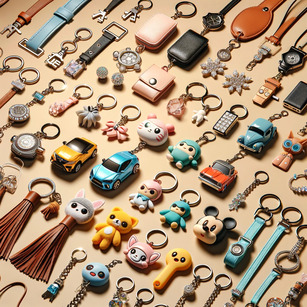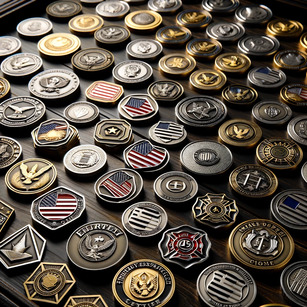Accessories are a great opportunity for small businesses, large brands, and even individual resellers that want to reach a new market segment. Younger, less affluent consumers may not have the disposable income to buy an entire outfit or a pair of shoes—but they usually can afford something smaller like a one-of-a-kind hat or a cool keychain. And, these consumers may not have limited funds forever. Over time, as their earning capacity goes up, they’ll begin to look at other items. Essentially, accessories can become the introduction to the rest of your products.
However, you need to be able to control the costs of manufacturing in order to keep price points low and ensure a healthy profit. This usually means outsourcing both design and manufacturing to companies in lower-cost countries. The problem with this is that you can lose a lot of control in the process. Unlike with domestic companies, you often can’t watch products being made, actively train staff, or manage quality assurance in foreign interactions. To get around this, it’s crucial to establish some best practices on how to manage contract manufacturing early—and get the right partners to enforce them.
Three Best Practices for How to Manage Contract Manufacturing
While contract manufacturing simplifies creating a new line of products, it’s certainly not a turnkey endeavor. Staying involved in the process is essential to ensuring high-quality results. These three best practices for how to manage contract manufacturing will help:
#1: Choose an apparel-savvy factory
Some overseas factories choose to specialize in a particular area because they don’t just make the item, they also design it. Connecting with a company that can design as well as manufacture an item is crucial. It’s not cost-effective to invest time and resources into designing relatively low-cost items like custom socks or wallets and then make a separate investment into manufacturing.
With a factory specializing in apparel, it’s possible to outsource the design too, choose from several options, and then select the most desirable one in price and aesthetic—all with the same partner.
The benefit here isn’t just cost savings, which is of course significant. It’s also quality. A contract manufacturer’s designers aren’t going to create something that they can’t manufacture. They’ll develop a design based on the abilities of their staff and the resources available to them. They’ll also have firsthand information on how to best train employees to meet this new design standard. As they’re the ones who created the design, they’re the best ones to manufacture it — a guarantee you don’t get with a designer off Fivr or Upwork
#2: Develop a detailed timeline and track it regularly
Line sheets and lookbooks may be important to retail buyers, but dependability, maybe more so. If a shipment is delayed at the factory or stuck in customs, it’s not the factory or the post office who’s going to deal with a disappointed retail buyer, it’ll be you. By the time those items make it to your store, it could be too late to put them on the rack.
It’s vital to keep a detailed timeline that provides some buffer for common delays. Things like error resolution, where items have to be remade, are to be expected and time should be earmarked. The same goes for occasional customs delays. An honest and experienced contract manufacturer will be able to anticipate and mitigate these types of delays, working within the timeline you develop together so you can accurately forecast your sales schedule. You will want to regularly follow up during the various manufacturing stages to proactively resolve issues and ensure the steps are completed as expected. Ideally, they’ll keep you posted without you having to inquire every day.
#3: Establish clear roles and responsibilities
Who is responsible for ordering materials and ensuring they’re safe and not treated with dangerous chemicals? Who manages issues if shipments are quarantined by customs? How are production delays handled? These are all questions that need answering early on, as these issues will likely come up eventually. You don’t want to wind up working with a contract manufacturer that washes their hands of shipments as soon as they’re out the door.
There are virtually hundreds of details that need to be considered when it comes to establishing a manufacturing contract with an overseas company. It’s also extremely hard to gain any recourse in the event of a contract breach, as you will be dealing with a very unfamiliar foreign legal system. That’s why eyes on the ground are crucial to select a reputable factory and help manage the process.
The Difference Between a Broker and a Manufacturing Partner
Finding a factory that will provide quality, communication, and follow-through isn’t easy when dealing with foreign markets. The simplest solution is a basic online site where brands can connect with manufacturers remotely, like Alibaba. But these digital brokers aren’t really suited to the specific needs of businesses and individuals, as they typically don’t design products, nor do they provide the highly detailed communication needed. They’re closer to being suppliers than manufacturers.
You may also come across in-country brokers. However, this type of broker has a very limited set of responsibilities. Mainly, they have one: to connect you with a factory. Once that’s done, responsibilities end. They don’t aid with shipping issues, manage quality assurance, or do any of the other things that help provide you with control in the contract manufacturing process. They’re the definition of middlemen.
Ideally, you’ll have a partner who can be your representative throughout the whole manufacturing cycle, from the initial design all the way to product delivery — like The/Studio. This is a type of partnership where the intermediary acts as your agent. They will have several established relationships with factories in many markets, making them ideal for selecting the right one for you. They’ll also have the clout to demand high standards and quality assurance, as well as hold factories accountable if errors are made.
Working with well-rounded factories, creating strict timelines, and establishing clear roles and responsibilities are the solutions for how to manage contract manufacturing. However, this is often easier said than done. You may have many options for finding contract manufacturers, but to effectively manage the whole process, you’ll need smart partners who are already on the ground, ready to be your eyes and ears on the factory floor — like us.
The/Studio is your comprehensive solution for how to manage contract manufacturing. We have access to some of the best design teams and factories for creating custom accessories and provide up to the minute tracking for all parts of the process. For more information, contact us.
Image Credit | Rawpixel.com | Shutterstock







